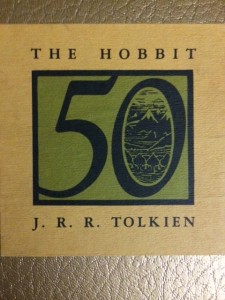An information dump is exactly what it sounds like: a steaming plop of backstory. It includes facts about characters and events that are relevant to your storyline but predate the opening scene. Often times, these factoids are the very building blocks of your story, but to start with them at the beginning – which is where they belong according to history – would carry as much suspense as a three-legged-turtle race. That’s why most suspense novels start with the main conflict already in motion. The characters develop as they navigate this conflict and the backstory comes in as they do. There are seven tools novelists can use to fill backstory: prologues, flashbacks, dreams, nightmares, internal thoughts, conversation and revelation.
Each has their place, but when you examine the first four, you quickly discover conflicts with the first rule of suspense, which is action! The last three rely on quieter moments in your story, and the information arrives between the action scenes. If all dumps go into toilets, then the first four are outhouses and the last three are indoor plumbing.
Prologues and Flashbacks
A prologue is positioned as the first read in your story, preceding Chapter 1. It can carry on for several pages. Flashbacks deliver the same kinds of information, only doled out between chapters and breaks in the story. It is hard to hold suspense in either format because, by their very nature, both take the reader out of the main story to enlighten them. Full stop, dump info, now back to the action! Most readers will let you get away with this once, but if you make a habit of it you’re likely to lose your audience to a tennis match on television.
I recommend writing prologues and flashbacks in the present tense, even where the rest of your novel is in past tense. This seems like a contradiction, but present tense allow your reader to become the parrot on your character’s shoulder, quietly watching the prequel unfold in real time, which, in and of itself, can build tension from even the most mundane events. In past tense, the same information comes out like a midnight visit to the outhouse: it’s all business, you wouldn’t be here if it was necessary, and it’s not some place you want to hang about.
It is important that your characters, not the narrator, tell the backstory, even if the characters in the backstory are not the main folks in the novel. Narration ruins tension, pure and simple. Past tense narration is a big yawn.
Dreams and Nightmares
Where flashbacks and prologues tell of past factual events, dreams and nightmares show the future, and they are not real. Even where the dream relives some past event, the circumstances in the dream are always different from what really happened, and that makes them unreliable for information dumps. Dreams hardly ever work with tension, but nightmares can have a place if the information you’re dumping is traumatic. Fires, the tragic loss of a loved one, or the face of the killer the night of the pummeling can work very well in nightmares, providing that someone wakes up the dreamer. Suspense is intrigue, not mystery, and readers deserve a “true” meaning of it all. Without this “truth” conversation between two on-page characters, your readers are still in a dark outhouse – they don’t know what, if anything, they just heard is trustworthy.
Minimize your use of prologues and flashbacks, dreams and nightmares, and you will minimize your problems with backstory. Now, let’s look at who flushes properly.
Internal Thoughts
Internal thoughts allow your characters to quickly dispense past information and future schemes at the same time while staying within your main conflict. (Consider: He reads the email and thinks, First time I met Sluggo, didn’t have my gun. Won’t make that mistake again.) People do not have long conversations with themselves – or talk in complete sentences. One past fact, relevant to the story’s future, that’s what you want. Too much internal thought and your readers are going to go huh? because with internal thoughts, you are not only inside the character’s head but the reader’s head, too.
Conversation
Far and away, the best place for your backstory is between the quotation marks. Just don’t make it sound like a witness’s testimony. Conversation is just that; it is two or more people conversing, not one character speaking to an audience of one or more. In filling backstory with conversation, usually one character will know the past event and the other character will draw it out of them, either intentionally or entirely by accident. You need to decide who’s going to be telling this prequel because you can’t be in two people’s heads at the same time. Think of our parrot jumping from protag’s shoulder to the other guy’s, back and forth, back and forth; poor bird will get so dizzy he’ll drop off the page. And so will your readers.
You can show some internal dialogue within conversation, but only if it is brief and it moves the action forward quickly. (“Sure, I was there. Hundreds of people was there when the lights went out. But I didn’t see who knifed’m,” Sluggo said with air of defiance, confident they’d never be able to identify him in the pitch black.) Now we know that Sluggo did it; his “internal thoughts” just told us one thing while his “dialogue” told the questioner something else. Your reader knows more than this other character does!
It is always best to pull backstory out of your characters and avoid using narrative as much as possible. Some narrative will be necessary, like in the above example with Sluggo, but the more you let your characters tell your story, the stronger they will become. Sweet-scented candles burning in the lavatory.
Revelation
Revelation is a surprise to both your readers and characters alike, and it hits like a thunderstorm. It can come in the form of a phone call from the doctor’s office, old letters found in the attic, or a sudden, unknown, rich relative, but it has to be a shocker. It has to be a turning point in the story. There is nothing gratuitous about revelation, and placement is just as critical as content. They don’t work in the very beginning or at the very end of your story (unless your protagonist is Sherlock Holmes). In the beginning, not enough has already been established; it’s all revelation. Plop it down right at the end and your readers are going to feel cheated. But incorporate it as a turning point in your story and a revelation can both explain the past and set the table for the rest of the banquet in an instant.
Imagine a different story… Back in Chapter 10, the sweet matriarch of our imaginary story died, leaving our hero, Andrew, without any benefactors. At the end of Chapter 15, we read how, Andrew has finally been evicted along with his new wife and infant from the home he’s grown up in all his life. The nanny’s son, he was, always helped out where he could. And now, the nasty niece, Nancy, and her troop of lawyers have taken over the estate and kicked Andrew and family out after 22 years, penniless and hopeless. Chapter 16 opens with Andrew’s wife pounding on the outhouse door and shouting, “The doctor’s office just called – DNA confirms that the letters in the attic are REAL! He was your father! The estate is yours, not Nancy’s!” Now that’s a revelation. The entire story turns at this point. Our hero who was destitute in Chapter 15 is now master of the house, and in the final scene of Chapter 21 we gleefully see Nancy on her knees scrubbing floors as Andrew’s five-year-old comes storming into the kitchen in muddy boots, demanding, “Where is my lunch?” Your reader gets up from your sumptuous table feeling full, and full of anticipation for what you’re going to cook up next.
Dump the dump
So if backstory always work best woven into dialog, why not just dump the dump? What if, instead, you scattered the information like a soft, spring rain. Now, the scat dissolves slowly and enriches the plot. For example, when getting into the head of your bad boy, what if you have one character in Chapter 1 tell how he was kicked out of Boy Scouts for fighting, and a couple of chapters later have another character, an ex-con, talk about how he was a model prisoner and released early. Then in Chapter 8, his first wife tells us how he battled alcoholism after losing his business to the IRS. We see this character’s evil development was years in the making; something not possible in one cognitive scene. In the end, the rain dissolves the information when and where necessary and the roots of our story grow stronger because of it.
Next Month: Pace
Suspense means action, and action demands quick movements from both your characters and your plotlines. However, a suspense novel is a marathon, not a sprint. Run too fast and you’ll burn out before the finish line – or your readers will. You want to keep a strong cadence, but there will be times you’ll want to back off just a bit and let your characters – and your readers – catch their breath. Next month, we’ll look pacing; when to trot, when to gallop, when to graze.


